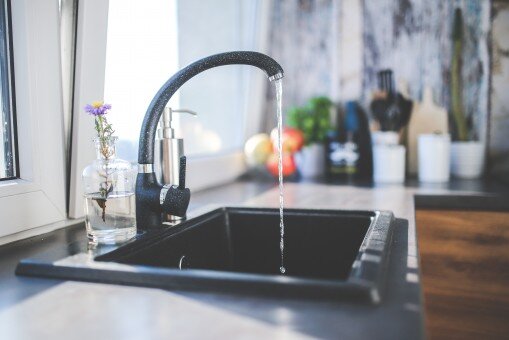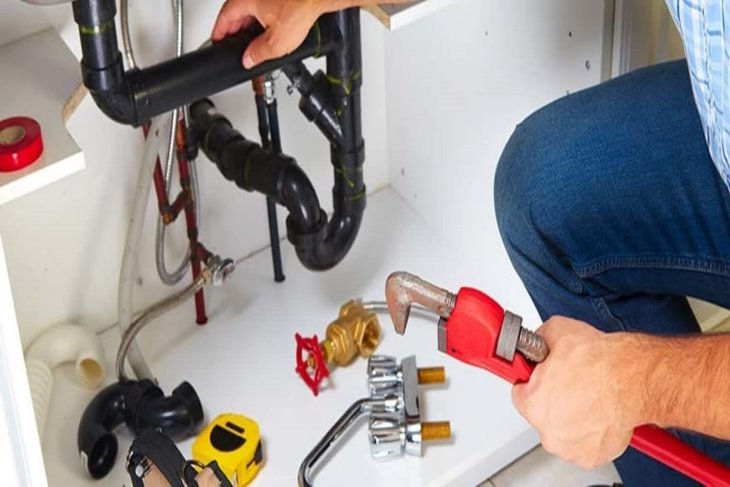The article author is making several good annotation about Innovative Plumbing Trends Transforming Construction in general in this content below.

Intro
The pipes industry is going through a transformative stage driven by technological improvements and expanding issues for sustainability and effectiveness. This post explores emerging trends and advancements forming the future of pipes.
Governing Landscape
Governing structures play an essential function in shaping the adoption of plumbing innovations, with standards and codes governing everything from water performance to item safety. As modern technologies continue to advance, regulative bodies should adjust to make sure consumer protection and ecological stewardship.
Future Expectation
The future of plumbing is identified by proceeded innovation and assimilation with other markets such as IoT, renewable resource, and structure automation. By welcoming sustainable methods, leveraging emerging innovations, and focusing on user-centric design, the plumbing market is poised to resolve the progressing needs of society while lessening its environmental footprint.
Enhanced Reality in Pipes
Increased Reality (AR) technology is revolutionizing pipes by giving service technicians with real-time aesthetic support for fixing and repair work jobs. AR-enabled clever glasses or mobile applications overlay digital information onto the physical setting, aiding plumbing technicians picture pipeline designs, determine covert leaks, and execute fixings with accuracy.
Effect of 3D Printing
The introduction of 3D printing has introduced brand-new opportunities in making plumbing parts. From custom-designed components to complex pipe installations, 3D printing enables rapid prototyping and on-demand manufacturing, minimizing lead times and allowing higher modification in plumbing design.
Health and Safety Qualities
In action to heightened issues for health and wellness, plumbing fixtures are including functions such as antimicrobial surface areas, touchless procedure, and self-cleaning systems. These innovations not only enhance hygiene yet likewise promote user comfort and comfort.
Hygiene-focused Fixtures
Touchless faucets, self-sanitizing bathrooms, and antimicrobial surfaces are becoming significantly common in household and industrial setups, reducing the threat of bacterium transmission and advertising a cleaner, healthier atmosphere.
Water High Quality Monitoring
Developments in water quality surveillance modern technologies make it possible for house owners to keep track of the pureness and security of their supply of water in real-time. Smart water quality sensing units can discover contaminants, pH degrees, and temperature level variations, empowering individuals to take proactive procedures to ensure water security.
Remote Pipes Services
Remote diagnostics and online aid are transforming the means pipes services are provided. Via video clip conferencing and remote access innovations, plumbers can troubleshoot problems, supply assistance for DIY repair services, and even carry out remote assessments, offering greater accessibility and ease to house owners.
Obstacles and Opportunities
While plumbing advancements hold tremendous guarantee, they additionally existing obstacles such as data personal privacy problems, governing compliance, and the need for labor force training. Addressing these difficulties needs partnership between market stakeholders and regulative bodies to make sure safe and accountable application of new modern technologies.
Smart Plumbing Equipments
Including smart innovation into pipes systems allows remote surveillance, leakage detection, and automated maintenance. Smart sensing units and IoT (Net of Things) gadgets enable homeowners and plumbing professionals to keep track of water usage and identify issues in real-time, leading to much more effective source monitoring and aggressive upkeep.
Water Performance Solutions
With raising focus on water preservation, ingenious options are being established to reduce water waste in plumbing systems. High-efficiency fixtures, greywater recycling systems, and clever watering controllers are among the technologies aiding customers decrease their water footprint while keeping convenience and convenience.
Lasting Materials
The shift in the direction of sustainability extends to plumbing materials, with a growing choice for green options. Naturally degradable piping materials, such as PEX (cross-linked polyethylene) and HDPE (high-density polyethylene), deal resilience and resistance to corrosion without endangering ecological stability.
Predictive Upkeep
Predictive upkeep strategies utilize data analytics and artificial intelligence algorithms to prepare for and protect against pipes problems before they happen. By examining historic data and performance metrics, anticipating maintenance formulas can recognize patterns and anomalies, making it possible for aggressive treatments to prevent expensive repairs and interruptions.
Verdict
To conclude, the future of plumbing is specified by a convergence of modern technology, sustainability, and user-centric layout. By accepting smart options, lasting materials, and aggressive maintenance practices, the pipes industry can boost performance, promote safety and security, and add to a much more sustainable future.
Plumbing Industry Trends You Need To Know
Smart technology in plumbing
Homeowners want to be able to manage their homes from their phones. The technology exists to make that happen. From smart toilets to leak detector devices, the whole plumbing system can be managed on an interconnected network made up of sensors, IoT devices, and machine learning algorithms.
This allows for wireless control to turn appliances on and off, automate routines, and access advanced monitoring to track water usage and flag potential issues. Smart technology streamlines water consumption, maintenance and energy usage, creating a more efficient system.
Green plumbing
The data analysis possible with smart technology not only improves convenience and cost-effectiveness but also fulfills a high-priority customer desire – sustainability. Consumers are very aware of their impact on the planet and want plumbing solutions to reduce damage and support sustainability. Eco-friendly plumbing solutions are already starting to emerge.
Customers can opt for low-flow toilets, water-saving faucets, and connections to sustainable energy sources. Beyond monitoring water consumption, customers can conserve water through the installation of greywater systems. This is a system that collects water that has been used but is still clean enough for some household uses such as toilet flushing.
Shorter product pipeline
To keep up with modern plumbing, plumbers need modern tools that enable them to complete jobs more efficiently. One technology making strides in this area is 3D printing. By 3D printing key plumbing fixtures, plumbers can reduce wait times even for specialized fixtures. It minimizes delays often seen in traditional manufacturing that frustrate customers and prevent plumbers from taking on more work.
Off-site repairs
Augmented reality is making a splash in many industries including plumbing. Plumbers can map a building online so they can explore the plumbing system through augmented reality, identifying areas of maintenance and repair completely digitally. This technology can be applied quite widely in plumbers’ work including planning installations and training new recruits. It’s safer, smarter and more efficient.
Low-footprint materials
Another way for plumbing companies to reduce their environmental footprint and meet the customer demand for sustainability is by using recycled materials in their work. The products they source and manufacture such as pipes, fixtures and faucets can be made from recycled materials. This saves the planet while being just as effective.
Onsite water purification
Additionally, plumbing companies can be advocates of water conservation and ease the financial and environmental concerns of customers by offering water purification systems. New water purification technology such as reverse osmosis systems and UV systems make it possible for homeowners and business owners to thoroughly cleanse water, removing contaminants onsite. This means the water can be safely reused in more ways than greywater can be, establishing a water recycling loop.
Tankless water heaters
Another innovation of modern plumbing is tankless water heaters. The idea is that the water is heated on demand as it runs through the system instead of being heated in a water tank. This is more energy efficient and therefore cost-effective and eco-friendly because water isn’t heated needlessly.

Hopefully you enjoyed reading our section about 7 Plumbing Industry Trends You Need To Know. Thanks a ton for spending some time to read through our short article. Sharing is good. You just don't know, you might be helping someone out. I enjoy your readership.
Services